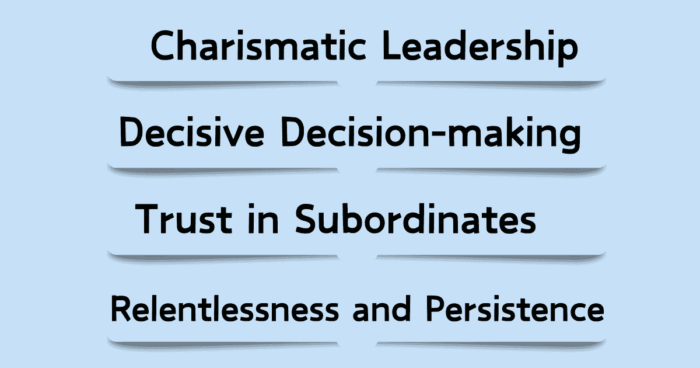“The best tactic is to attack the enemy’s strategy, not their army.” – Khalid bin Waleed.
Khalid bin Waleed is celebrated for his exceptional military strategies and leadership qualities in early Islamic History. Born into the powerful Quraysh tribe, Khalid initially opposed Islam but later converted, becoming one of its most formidable defenders. His approach to warfare was innovative and significant in shaping the early successes of the Islamic State. Beyond his unparalleled battlefield victories, his approach to the battlefield and command offers invaluable insights into the complexities of military leadership.
This article delves into the military strategies, tactics, and leadership qualities of Khalid bin Waleed.
Khalid bin Waleed’s Core Military Strategies

Flexibility and Adaptability
One of Khalid bin Waleed’s most notable strategies was his ability to adapt to changing circumstances on the battlefield. Unlike many generals of his time, Khalid did not adhere strictly to traditional tactics. Instead, he assessed the situation in real time and made necessary adjustments to his plans. This flexibility allowed him to outmanoeuvre enemies who were often larger and better equipped.

For example, during the Battle of Mutah (629 CE), where Muslims were vastly outnumbered, Khalid used his adaptability to execute a strategic retreat, saving his troops from annihilation and earning the title “Sword of Allah.”
Use of Speed and Surprise
Khalid was a master of speed and surprise. He understood that the element of surprise could demoralize and confuse the enemy, often leading to their defeat. His swift movements during battles often caught his enemies off guard, allowing him to win despite numerical disadvantages.
The Battle of Yarmouk (636 CE) epitomizes this approach. By rapidly moving his forces and launching unexpected attacks, he managed to encircle the larger Byzantine army and inflict a crushing defeat.
Psychological Warfare
Khalid bin Waleed also employed psychological tactics to weaken his enemies before engaging in battle. He would spread rumours, exaggerate the strength of his forces, or use deceptive manoeuvres to create fear and uncertainty among his opponents. His reputation alone became a weapon.
In the Battle of Firaz (634 CE), Khalid employed psychological tactics to confuse and demoralize his enemies. He utilized feigned retreats to lure the enemy into a vulnerable position, creating an illusion of weakness that masked his true intentions. Once the enemy was drawn in, Khalid launched sudden and ferocious counterattacks. These tactics confused the enemy and sapped their morale, making them more susceptible to defeat. Khalid’s ability to manipulate the psychological aspects of warfare, including fear and confusion, was a key component of his strategic approach and contributed to his success in this and other battles.
Use of Terrain
Understanding and utilizing the terrain was another hallmark of Khalid’s strategy. He meticulously planned his battles to take advantage of the natural landscape, whether positioning his troops on high ground, using rivers as defensive barriers, or luring enemies into narrow passes where their numbers would count for little.

In the Battle of Walaja (633 CE), Khalid used the surrounding hills to conceal his forces, launching a devastating ambush that crushed the Sassanian army.
Khalid bin Waleed’s Leadership Qualities

Charismatic Leadership: Inspiring Troops
Khalid bin Waleed possessed an extraordinary ability to inspire and motivate his troops. His personal courage and unwavering faith were infectious, instilling a sense of confidence and determination in his soldiers. Even in the face of overwhelming odds, his charisma could lift the morale of his army, transforming them into a rigorous fighting force.

His presence on the battlefield, leading from the front, served as a constant source of inspiration, encouraging his troops to fight with unwavering valour.
Decisive Decision-Making: Quick and Effective Choices
The battlefield is a dynamic environment where split-second decisions can determine the outcome of a battle. Khalid bin Waleed excelled in this regard. His ability to assess complex situations rapidly and make decisive choices often turned the tide in his favour. His decisiveness was rooted in a deep understanding of warfare and a profound confidence in his own judgment. His battle strategies often involved taking calculated risks that could turn the tide of battle, demonstrating his keen strategic mind and ability to handle high-stress scenarios with confidence.

During the Battle of Yarmouk, Khalid faced a dynamic and rapidly evolving battlefield. His ability to quickly assess the situation and make strategic decisions, such as the coordinated attacks and repositioning of forces, played a pivotal role in the Muslim victory.
Delegation and Trust in Subordinates
While Khalid was undoubtedly a charismatic and decisive leader, he also understood the importance of delegation. He recognized that effective leadership involves empowering subordinates. He created a more agile and responsive command structure by delegating responsibilities to trusted lieutenants. This approach allowed him to focus on the overall strategy while ensuring that competent commanders on the ground made tactical decisions.
Relentlessness and Persistence
Khalid bin Waleed was a relentless pursuer of victory. The Ridda Wars (632–633 CE) provide a compelling example of his determination. Faced with multiple rebellions and daunting challenges, he refused to be deterred. His persistence in suppressing these uprisings was instrumental in consolidating the Islamic state and ensuring its survival. This unwavering resolve, coupled with his strategic brilliance, made him an almost invincible force.
Khalid bin Waleed’s Tactical Innovations

Double Envelopment Maneuver
One of Khalid’s most famous tactics was the double envelopment, a maneuver where he would encircle the enemy from both flanks.
The Battle of Walaja showcases Khalid bin Waleed’s masterful use of the double envelopment tactic. In this engagement, Khalid faced a numerically superior Persian force. To counter this, he executed a double envelopment manoeuvre. In this classic military strategy, forces attack both enemy flanks simultaneously while enveloping them from the rear. Khalid’s forces encircled the Persians, cutting off their escape routes and supply lines. This tactic isolated the enemy and maximized the impact of Khalid’s concentrated attacks, leading to a decisive Muslim victory.
Feigned Retreats and Ambushes
Another tactical feature of Khalid bin Waleed was his masterful use of deception. He often employed feigned retreats to lure his enemies into a false sense of security, only to ambush them with devastating effect. This tactic turned a defensive position into an offensive opportunity, allowing Khalid’s forces to gain the upper hand.

At the Battle of Uhud (625 CE), although initially on the opposing side, Khalid’s use of feigned retreats is a notable example of his tactical genius. He led a strategic feigned retreat to draw the Muslim forces out of their defensive positions, creating an opportunity for a full assault on their vulnerable flanks. This tactic disrupted the Muslim formations and contributed to the initial setbacks of the battle. By exploiting this tactic, Khalid demonstrated his ability to manipulate battlefield psychology and turn the tide of engagement in favour of his side.
Coordinated Multi-Front Assaults
Khalid was a pioneer in coordinating multi-front assaults, where he would simultaneously engage the enemy on different fronts, spreading their forces thin and creating confusion.

During the early Islamic conquests of Iraq, Khalid bin Waleed utilized coordinated multi-front assaults to dismantle the Persian defences. Khalid’s approach involved dividing his forces to strike at various strategic points, creating confusion and forcing the Persian troops to defend multiple positions simultaneously. This method was particularly effective in breaking the cohesion of the Persian military and securing rapid victories across the region. His adept use of this strategy facilitated Islamic territory’s swift and effective expansion into Persian lands.
Defensive vs. Offensive Strategy
Khalid was adept at balancing defensive and offensive strategies. He understood when to hold ground and when to go on the offensive, often using defensive positions to lure the enemy into a vulnerable state before launching a counterattack. This balanced approach made him a versatile and unpredictable commander.
Conclusion
Khalid bin Waleed’s legacy as one of the greatest military strategists and leaders in History is well-earned. His core strategies of flexibility, speed, surprise, and psychological warfare, combined with his charismatic leadership and tactical innovations, made him a strong force on the battlefield. His ability to adapt to changing circumstances and make decisive decisions under pressure was key to his many victories.
Khalid bin Waleed’s impact on military History cannot be overstated. His strategies and leadership qualities have been studied and admired by military leaders throughout History.
References
Books
Fundamentals of Islamic Asymmetric Warfare. Rodgers, R. (2008).
The Sword of Allah: Khalid bin Al-Waleed, His Life and Campaigns by Muhammad Iqbal
Khalid bin Waleed: The Great General of Islam by Abdul Rahman
The History of the Khalid bin Waleed by Dr. Syed Ameer Ali
The Armies of the Caliphs: Military and Society in the Early Islamic State. Kennedy, H. (2001).
Byzantium and the Early Islamic Conquests. Kaegi, W. E. (1992).
The Military Campaigns of Khalid bin al-Waleed. Gwynne, R. W. (2007).
